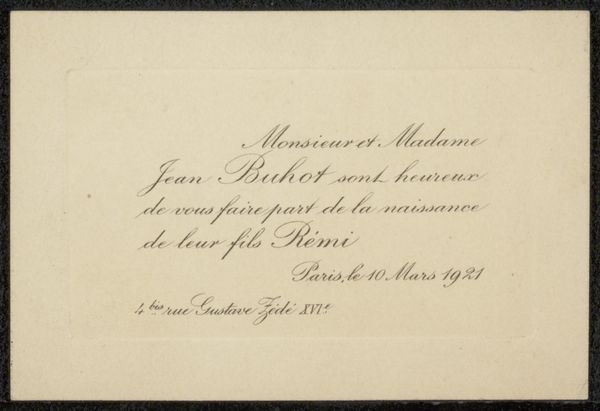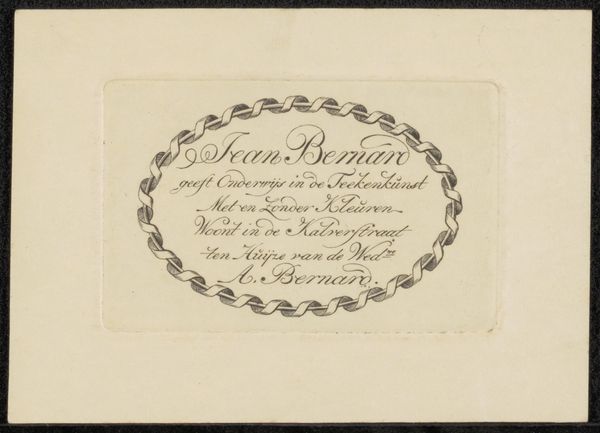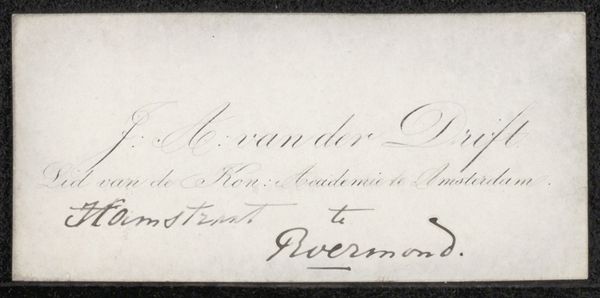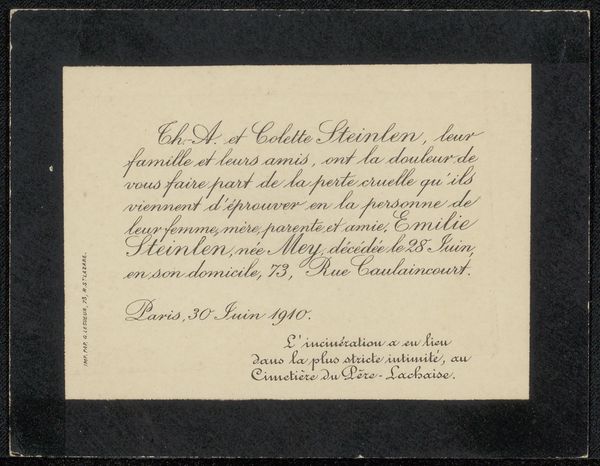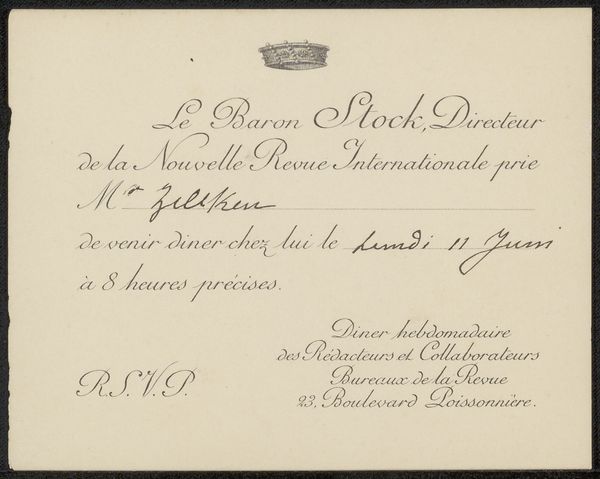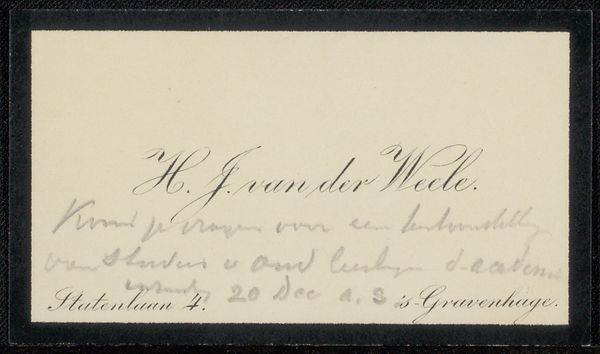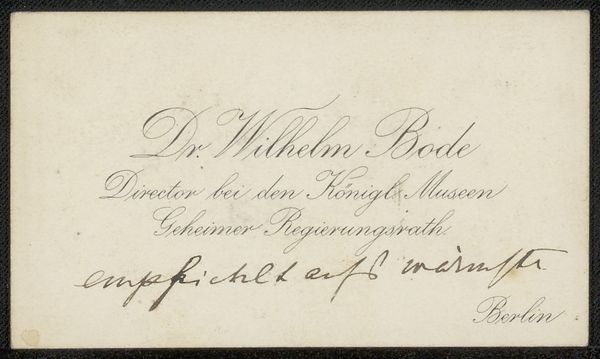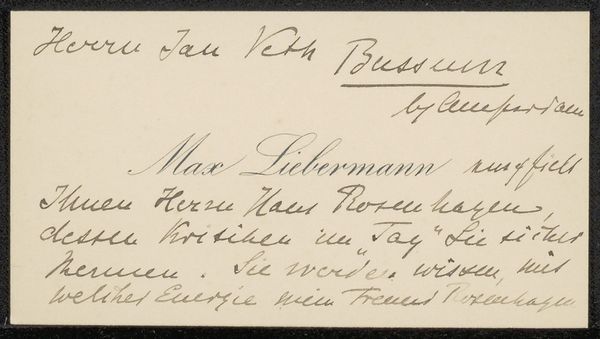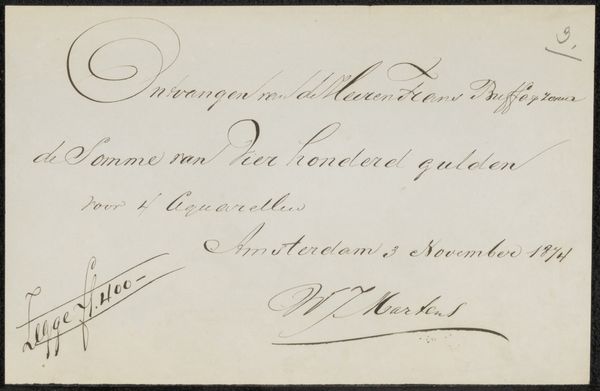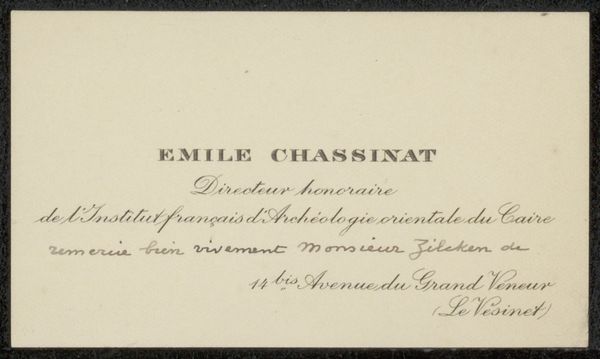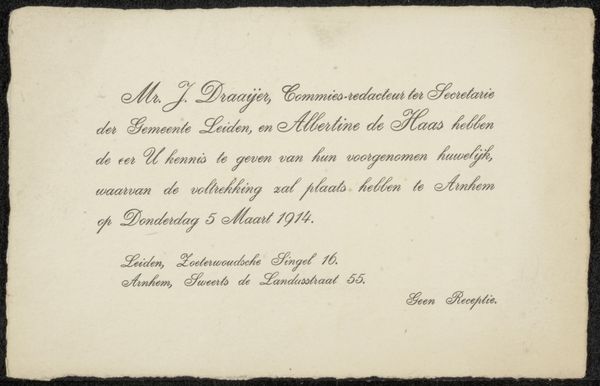
drawing, graphic-art, typography, ink
#
drawing
#
graphic-art
#
aged paper
#
script typography
#
hand-lettering
#
hand drawn type
#
hand lettering
#
typography
#
ink
#
hand-drawn typeface
#
fading type
#
thick font
#
handwritten font
#
golden font
#
calligraphy
Copyright: Rijks Museum: Open Domain
Editor: This is René Brancour's calling card, dating from 1872 to 1948. It’s done with ink on paper, so delicate and faded. The script is just beautiful. It’s almost hard to believe someone could have handwriting this consistent. How do you read a piece like this? What do you notice? Curator: Well, initially, I’m drawn to consider the social function of the piece. Calling cards were a critical element of social interaction, weren’t they? Editor: Definitely. Almost like a physical representation of one's social standing. Curator: Exactly. Consider what Brancour's titles tell us. “Conservateur du Musée du Conservatoire national de Musique et de Déclamation”—curator at the national music conservatory—and professor at a lycée. These titles conveyed considerable cultural capital, opening doors within a stratified society. It wasn’t simply about information, it was about carefully projecting status. Editor: So the card functions almost as a mini-resume. The artistry makes it unique, however, setting it apart from typed versions we would create today. Curator: Precisely. And how might the physicality of the card itself – the paper stock, the careful penmanship – contribute to the perception of refinement and distinction in that era? It makes one wonder about the intended recipient. Were these cards generally exchanged between peers, superiors, or inferiors? Editor: That is a great point. Now I’m curious to know what kind of impact a beautiful card would have in shaping the early moments of new professional relations. I definitely hadn’t thought about how powerful a small card could be! Curator: And that power rested within the institutional framework that granted significance to such exchanges, creating hierarchies and defining social spaces. Editor: Food for thought! Thanks, that was an amazing glimpse into history!
Comments
No comments
Be the first to comment and join the conversation on the ultimate creative platform.
